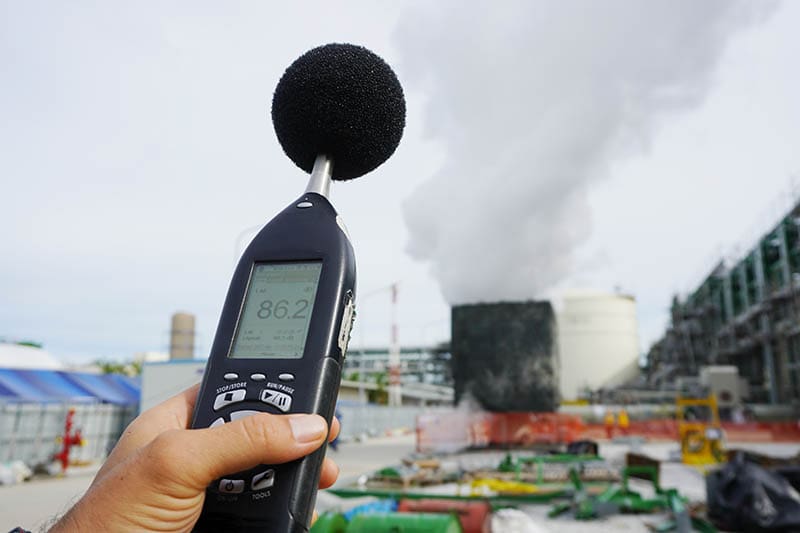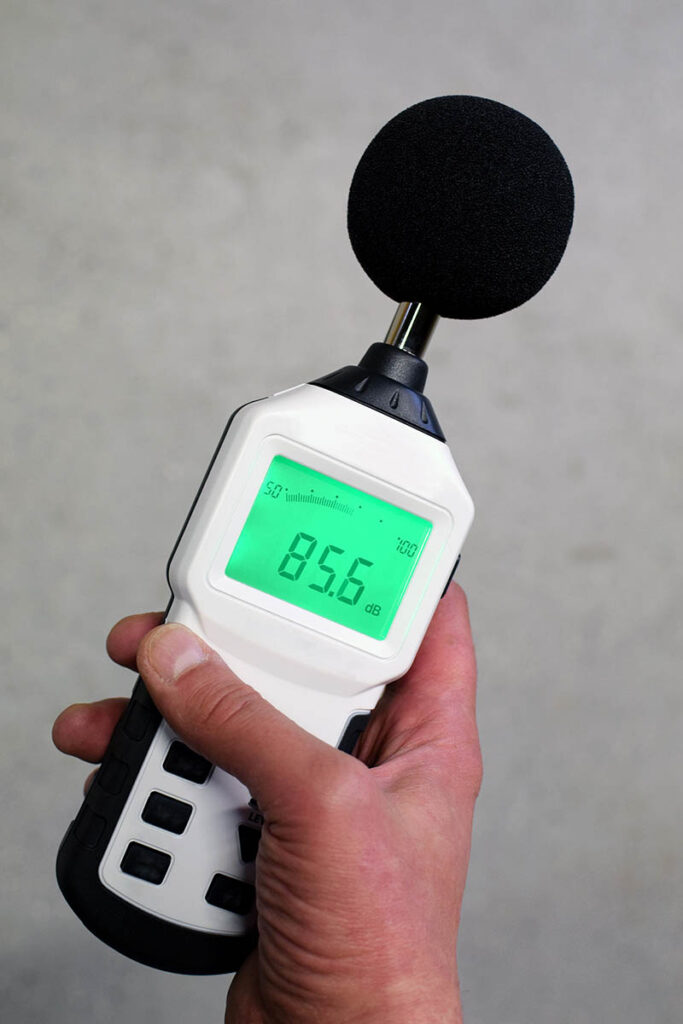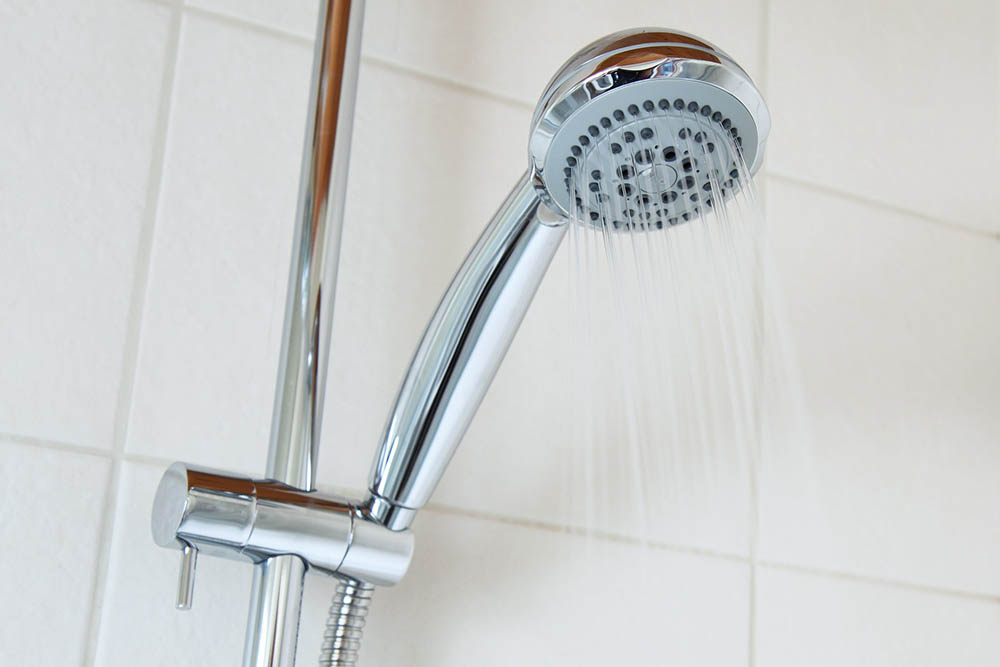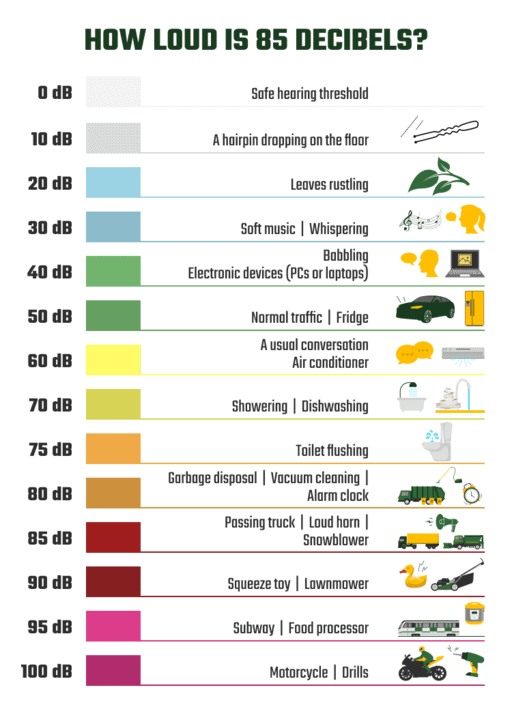How Loud Is 85 Decibels (dB)? (With Noise Comparison Chart)
-
Jeff Weishaupt
- Last updated:

Everybody should know that 85 decibels (dB) is the maximum level of noise you can expose yourself to. If you keep listening to it for more than 8 hours, it can even lead to permanent hearing loss. This means any sound that is 85 dB or above is harmful to your ears. Such noises include police car sirens, vacuum cleaners, garbage disposal, snow blowers, etc.
If you want to stay safe, only listen to sounds at 70 dB or lower. They won’t affect your hearing ability no matter how long you listen to them. But what if you have no option other than listening to 85 dB noise? Just remember the safe listening time. For 85 dB or above noise levels, the time is cut in half with every 3 dB increase.
According to environmental noise regulations, outdoor sound levels of 60 to 65 dB are safe. But how to know which noise is 85 dB? Let’s explore how loud 85 decibels is, along with a comparison chart to other sounds.
What Are Decibels?
All sorts of noises and sounds are measured in decibels (the standard unit). The decibel scale starts from 0 dB (the sound level that’s barely audible) and goes up to 130 dB (the sound level that’s painful to hear).
According to the World Health Organization (WHO) and Environmental Protection Agency (EPA), the safe hearing level for humans is 70 dB daily. This means 85 dB is 15 times less safe for your ears.
The National Institute for Occupational Safety and Health (NIOSH) states that 85 dB is the maximum noise level for humans. It can cause hearing loss if you keep listening for more than 8 hours. However, studies have found that exposure to 85 dB or above noises for more than 8 hours daily is less likely to cause hearing damage. But remember, prevention is better than having to find a cure.
The safest way to hear noises of or above 85 dB is by wearing appropriate protective equipment. But if you can, always avoid hearing such loud noises.

How Loud Is 85 Decibels?
You can evaluate how loud 85 dB is by comparing it to different noises in your surroundings. Generally, 85 dB is a noise level that equals the sound of heavy traffic, food blender, movie theater, noisy restaurant, etc.
You see, all these noises are pretty common in our life, and we listen to them almost every day. But unfortunately, we don’t know how these sounds can harm your hearing when exposed to them for a long time.
- Noisy hotel lobby
- Airport
- Police car siren
- Heavy road traffic
- Tractor
- A passing train or truck
- Hairdryer
- Snowblower
- Garbage disposal
- Vacuum cleaner
Comparing 85 dB With Other Noise Levels
We know now 85 dB is a relatively high noise level. It can become dangerous to your ears and, in the worst cases, can even cause hearing loss. But the question is: How can you identify an 85 dB noise? And how can you determine when to stop listening to a noise?
Here is what 85 dB sounds like when compared to other noise levels:
50 Decibels

Fifty dB is a moderate noise level in a quiet room or a residential neighborhood. Think of a quiet suburb, office, or refrigerator. All these are common examples of 50 dB. Compared to this noise level, 85 dB is quite loud.
With simple math, you can see that 85 dB is 35 times more powerful than 50 dB. That is a huge difference.
70 Decibels

Seventy dB is a safe noise level for humans. It is the noise you hear when showering, flushing the toilet, or visiting a nearby busy restaurant or a hotel hobby. These are moderate-level noises that don’t affect your hearing ability.
You can listen to 70 dB for prolonged periods. Compared to this noise level, 85 dB is 15 times more intense.
100 Decibels

One hundred dB is extremely loud. It can lead to several hearing problems. In fact, its hearing time limit is just 45 minutes. This means you shouldn’t listen to 100 dB for more than 45 minutes, or you will lose your hearing.
Common 100 dB sounds are factory noise, loudspeakers, and motorcycles. Such noise levels are 15 times more intense compared to 85 dB. Therefore, wearing protective hearing gear is a must in these areas.
Conclusion
After reading this article, you know that 85 dB is an extremely loud sound level. Listening to a sound at 85 dB for 8 hours or more can cause severe hearing damage or eventual hearing loss. Some common examples of 85 dB noises are heavy road traffic, garbage disposal, passing trains or trucks, loud horns, etc.
It is recommended to prevent being in such noisy areas, but if you have no other option, wear protective hearing gear all the time. You should also compensate for loud noise exposure by spending time somewhere peaceful or quiet. It will strengthen your hearing ability.
Featured Image Credit By: Red_Shadow, Shutterstock
Contents



